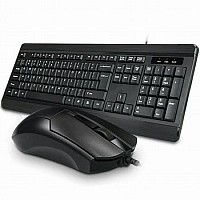Using the Keyboard and Mouse Effectively
Definition
Using the keyboard and mouse effectively refers to the skill of navigating and interacting with a computer interface or software using keyboard shortcuts and mouse gestures. This approach can enhance productivity and efficiency by reducing reliance on manual clicking and increasing the speed of performing tasks.
Steps for Operating Keyboard Features
Steps for Operating Keyboard Features:
Typing and Text Manipulation:
- Familiarize yourself with the layout and function of the keyboard, including the alphanumeric keys, function keys (F1-F12), and special keys like Ctrl, Alt, and Shift.
- Learn touch typing techniques to improve speed and accuracy when typing.
- Utilize keyboard shortcuts for common text editing actions like copy (Ctrl+C), cut (Ctrl+X), paste (Ctrl+V), select all (Ctrl+A), and undo (Ctrl+Z).
Using Function Keys:
- Function keys (F1-F12) often have specific functions depending on the software or operating system you are using. Familiarize yourself with their specific functionalities in the programs you frequently use.
Navigation Shortcuts:
- Learn navigation shortcuts for efficient movement within documents, web pages, or folders.
- For example, use the arrow keys to move up, down, left, or right; use Ctrl+Home (Windows) or Command+Up arrow (Mac) to go to the top of a document; and use Ctrl+End (Windows) or Command+Down arrow (Mac) to go to the end of a document.
Steps for Operating Mouse Features:
Pointer Movement:
- Practice smooth and controlled mouse movements to improve accuracy.
- Adjust the mouse sensitivity settings in the operating system to your preference.
Clicks and Double-Clicks:
- Master the left mouse button for primary clicks and double-clicks.
- Utilize the right mouse button for accessing context menus with additional options for files, folders, or software.
Mouse Gestures:
- Some mouse drivers or software allow you to configure specialized gestures for specific actions.
- Explore the available options to perform tasks such as scrolling, zooming, or navigating forward/backward in web browsers or applications.
4. Drag and Drop:
- Use the mouse to click and hold an item, then drag it to move or copy it to another location.
- Combine drag and drop with keyboard modifiers like Ctrl (Windows) or Command (Mac) for additional functionalities such as copying instead of moving files.
Features of a Keyboard and a Mouse
1. Keyboard Features:
a) Shortcut Keys: Many software applications have built-in shortcut keys that allow you to perform common tasks quickly. These shortcuts can range from basic text formatting to more complex actions like saving, printing, or opening specific features within the software. Familiarize yourself with the shortcut keys relevant to the applications you frequently use to improve your workflow.
b) Keyboard Modifiers: Keyboard modifiers such as Ctrl (Windows) or Command (Mac), Shift, and Alt allow you to modify the behavior of other keys. For example, holding down the Ctrl key while clicking on a file allows you to select multiple files at once. Keyboard modifiers are often used in combination with other keys to execute special commands or access hidden functionalities.
c) Accessibility Options: Operating systems provide various accessibility options to accommodate individuals with special needs. These options include features like Sticky Keys (which allows you to press one key at a time for shortcuts that require multiple key combinations), Toggle Keys (which provide audio cues for certain key presses), and Filter Keys (which ignore brief or repeated keystrokes). Explore the accessibility settings on your operating system to find features that can make using the keyboard easier for you.
2. Mouse Features:
a) Scroll Wheel: The scroll wheel located between the left and right buttons of the mouse allows you to scroll vertically through documents or webpages. In addition to its primary functionality, some software or applications utilize the scroll wheel for other purposes, such as zooming in or out, adjusting volume, or navigating timelines.
b) Context Menus: Right-clicking on an item or area displays a context menu with a list of actions or options relevant to that item or area. Context menus are customizable, and some software applications offer context-specific options that can help you quickly navigate and interact with the software.
c) Mouse Sensitivity: Mouse sensitivity settings control the speed at which the cursor moves on the screen in response to movement. Adjusting the sensitivity to your liking can improve accuracy and comfort while using the mouse.
d) Mouse Gestures: Some software or browser extensions allow you to assign specific actions to certain mouse gestures. For example, you can configure a gesture to go back or forward in your web browser by simply swiping to the left or right with the mouse. Experiment with mouse gesture options to see if they boost your efficiency

